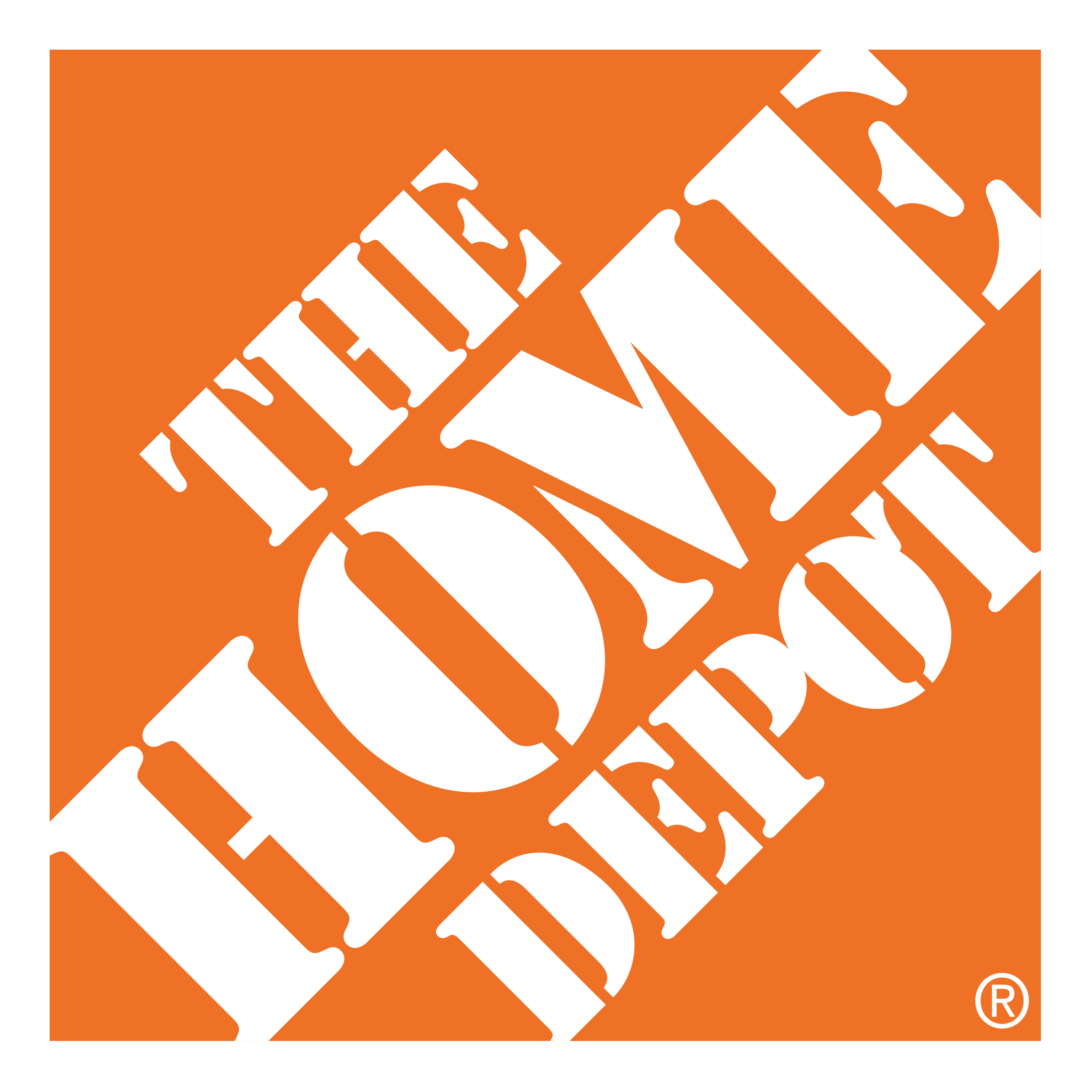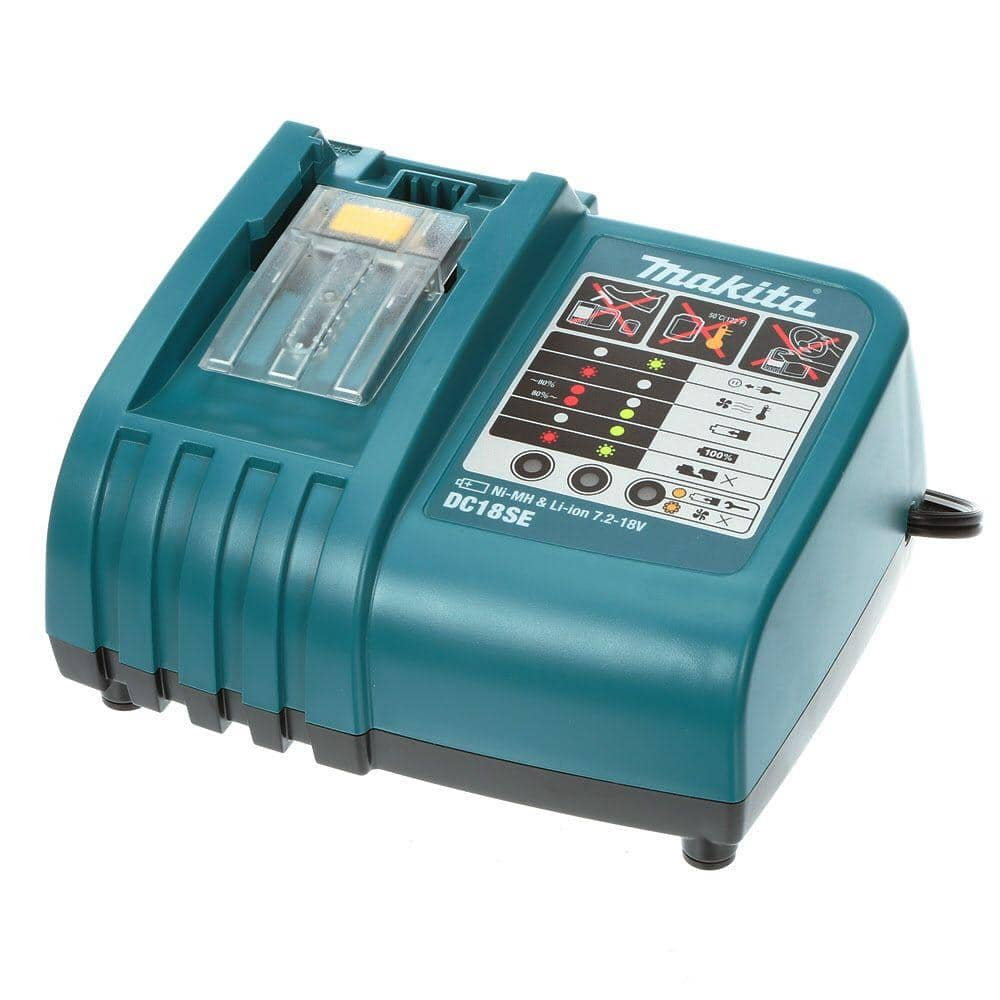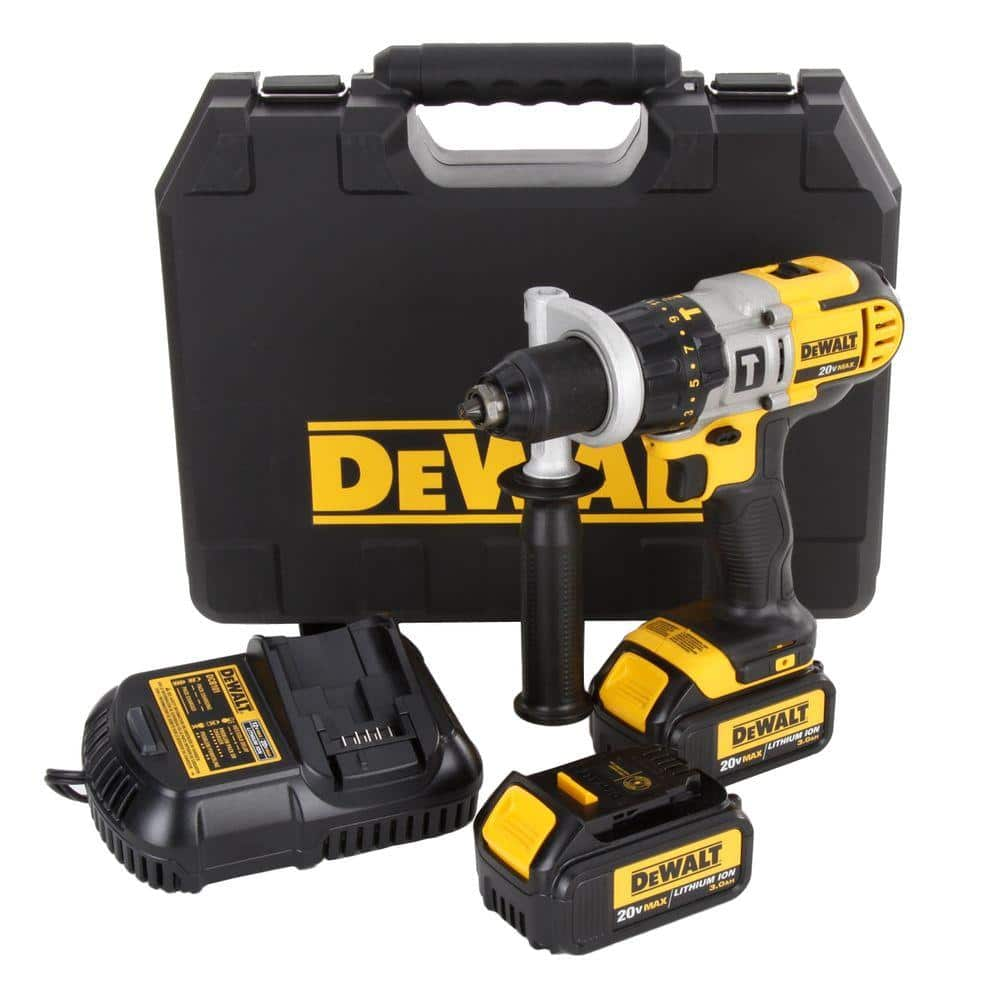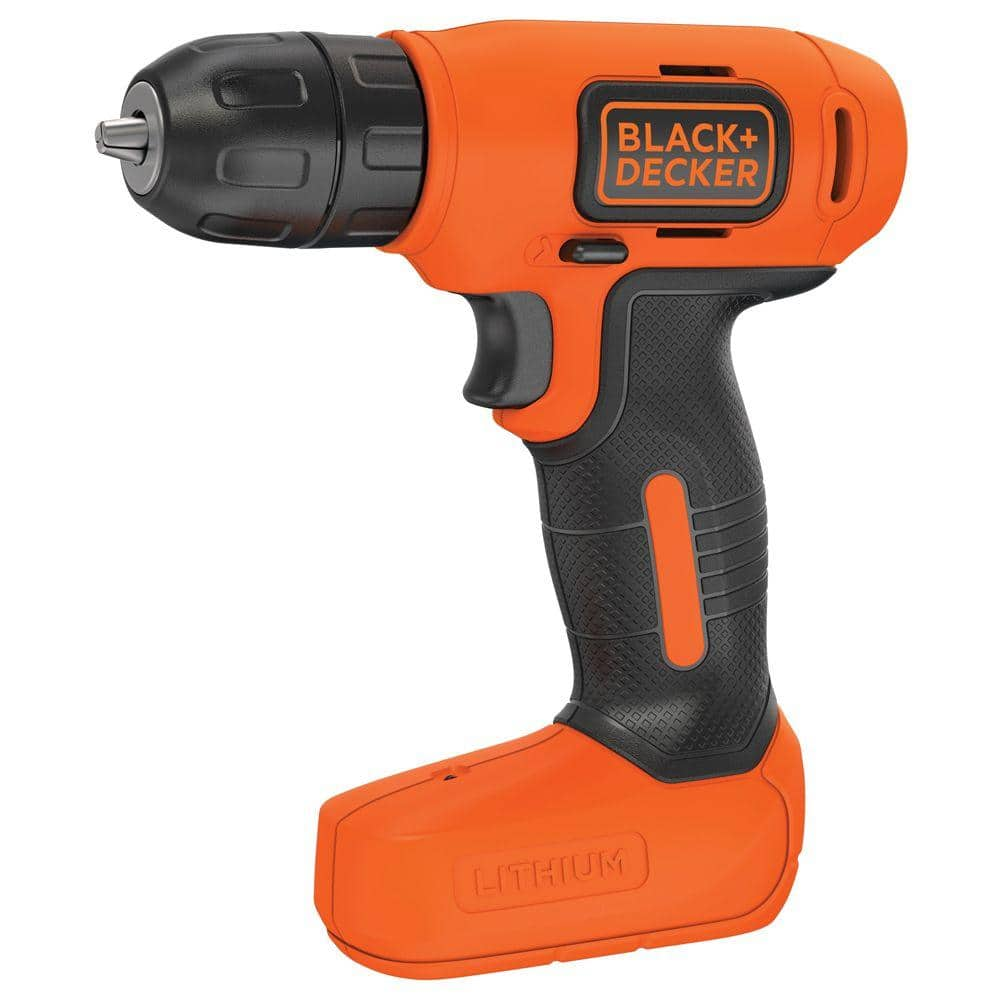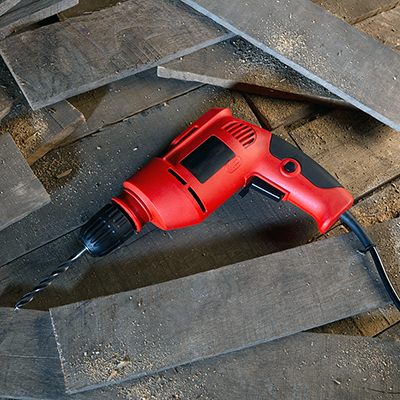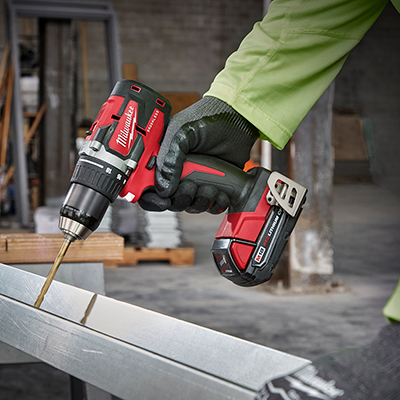Best Power Drill for Your Projects

Last updated January 2, 2025
When outfitted with the correct drill bits and accessories, a corded or cordless power drill can be the most useful tool you own. This guide explains the different features available in corded and cordless drills. You can then choose the best power drill for your needs.
When using a power drill or any power tool, follow the manufacturer's instructions for proper use. When working with corded or cordless power drills, use tools only for their intended purpose. You should also wear safety equipment, including eye and respiratory protection.
Table of Contents
Corded vs. Cordless Drills
Power Drill Features
Drill Types
Basic Power Drills
Hammer Drill
Right-Angle Drill
Corded vs. Cordless Drills

There are a wide range of cordless power drills and corded power drills to choose from. The best power drills for you depend on the tasks you want to tackle. Choose from drill-drivers, hammer drills, right-angle drills and impact drivers. Each drill type has several features, so that you can pick the one best suited for your job.
For many customers, the best drill to buy for home use is a cordless model. These products, including cordless drills with batteries, are innovative. They can provide the same power (or more) as corded products, offering freedom and convenience.
Cordless drills power up with a simple recharge of their lithium-ion batteries. To avoid unexpected delays, charge your battery after every job. Many cordless power drills also include a light-emitting diode (LED) light. This indicates when the battery has finished charging.
You may prefer a cordless drill with a brushless motor. They offer more torque than a traditional motor but need less energy. You get a longer runtime and a better overall performance. Besides a brushless motor, choose a cordless drill with lithium-ion batteries. Or purchase one with a rechargeable battery, extending both runtime and lifespan.
Power Drill Features

When shopping for the best power drills, consider the chuck capacity for each type of drill. The chuck is the cylindrical clamp that holds the rotating piece (usually the drill bit) in place. Loosen the chuck to remove and replace the drill bit. Then, tighten to hold it in place.
- Drill size/chuck capacity: The size of the chuck determines the maximum drill bit diameter allowance for that drill. The most popular is a 3/8-inch diameter drill. A 1/4-inch diameter features a lightweight design. It is generally one of the best drills for home use. A heavy-duty capacity drill usually has a 1/2-inch diameter.
- Grip: When choosing the best cordless drills, remember to find one with a grip that feels good in your hands. You don't necessarily need the most powerful model on the market. Most have an ergonomic pistol grip, with a flat battery pack attached to the handle's base. It will be comfortable to hold and won't be so heavy that your hand tires quickly. Certain lighter-duty drill/driver tools have a pivoting handle to permit operation in tight spaces. Cordless rotary hammers and some hammer drills have an additional side handle. This gives a user more leverage when boring into masonry.
- Torque: Torque is the rotating force of a drill. Many cordless drills feature an adjustable torque control. This clutch can be set to increase or limit the amount of torque delivered. You can then control depth and prevent over-screwing or stripping screws in driving applications. Lower clutch settings are used for screwing projects. But higher clutch settings allow the tool to bore at full strength. Cordless drill reviews show varied results of the automatic torque control on some models.
- Speed and power: Revolutions per minute (RPM) measure the speed of a drill. The higher the RPM, the lower the torque delivered. More amperage (amp) equals a more powerful drill. A corded or cordless drill with a lower amperage will not be very powerful. However, it may be suitable for household use or occasional shop use. A higher amp motor in a corded or cordless drill model is much more powerful. It's better suited for heavy-duty jobs or professional use.
- Variable speed: A variable speed motor has multiple speed settings. These can be changed using a single switch or trigger, usually found near the grip. Variable speed motors allow you to increase or decrease the torque.
- Reverse mode: This is convenient when removing screws or backing out when boring holes.
- Keyless vs keyed chucks: Keyless chucks offer the convenience of quick bit changes. However, keyed chucks offer a slightly better bit grip for a larger drill. 1/4-inch hex or collect chucks require a 1/4-inch hex drill. These allow for quick changes of drill and driver bits.
- Platforms: You may own more than one power tool of the same brand. If so, consider the battery-charging platforms available within that brand. They remove the need for having more than a single battery. Instead, one charging platform is shared among multiple tools of the same brand.
- Bluetooth connectivity: You can buy drills and other power tools that feature Bluetooth technology and tracking tags. They allow you to access your devices remotely and find them easier.
Drill Types

The best power drills depend on the tasks you want to tackle. Choose from drill-drivers, hammer drills, right-angle drills and impact drivers. Each type of drill has a lot of features, so that you can pick the best drill suited for your job.
Basic Power Drills

Power drills are a basic type of drill suitable for most household applications and DIY projects. These all-purpose devices are used for drilling holes and to drive screws. The clutch can be adjusted to consistent drill depth.
Hammer Drill

Similar to a standard drill, a hammer drill has a hammering function to drill into masonry. Hammer drills make a forward pounding motion. Their bits rotate to make driving holes into masonry and other hard surfaces easier. The hammering mode on most models can be turned off to allow only drilling functionality.
Right-Angle Drill

Right-angle drills are designed for drilling and driving in tight spaces. They have a chuck mounted at a 90-degree angle to the drill body. These drills are ideal for working on tasks in tight spaces.
Impact Driver

An impact driver is a driving tool that uses quick-change bits and more torque than a standard drill. Impact drivers have a powerful impact mechanism. It drives lag bolts and large fasteners quickly and efficiently. Compact design and impact functions also reduce twisting force on the wrist and user fatigue.
Rotary Hammer Drill

A rotary hammer drill is engineered specifically to drill holes in concrete and other masonry materials. Rotary hammers pound through tough materials, including concrete, masonry and tile. Some models include rotation-only, rotary hammer and hammer-only modes. They feature a secondary handle for added stability.
Depending on the jobs you regularly tackle, you may find that the best drill for your toolbox is not a single drill. It might be better to invest in a set, providing various power drill types. If so, consider your needs and investigate the different brands available. In some cases, you can choose from a single brand. However, there is nothing wrong with selecting tools from a few different platforms.
Screw Gun

Screw guns are designed to drive screws, primarily for drywall applications. They include high torque motors for driving into dense materials. This reduces user fatigue for large projects.
Understanding Cordless Drill Batteries

Cordless power drills are only as powerful as their rechargeable batteries. A higher voltage means more power. Voltage is the pressure made by an electrical circuit's power source. It pushes the current through a conducting loop. Voltage, measured in volts, allows electrical devices to work. Drill voltages range from a 4-volt battery to 28-volt models, used for some heavy-duty tools. The most common ratings are 18-20 volts, suitable for most household and DIY uses.
Amp hours (Ah) is a measurement that indicates a battery's energy capacity. Also called battery life, a higher number means a longer operating time. A lithium-ion battery with 3.0Ah will last twice as long as one with 1.5Ah. This higher capacity also weighs twice as much. If drill weight is a concern, choose one with less amps. Here are some more tips:
- Start every project with a fully charged battery in the drill. You should also have backup batteries, including one in the charger. You'll avoid having two exhausted batteries at the same time.
- Whenever you take a break, also give your drill a breather. Just put the battery into the charger or swap power packs.
- You may prefer drills enabling different battery technology. For example, lithium-ion batteries typically charge faster and offer longer battery life. They also have higher energy density, meaning they can provide more power for a longer time. Or consider batteries with dual-voltage compatibility. These can power multiple tools, reducing the need for extra batteries.
Choosing the Best Cordless Power Drills

Many customers have one, simple question: What is the best drill I can buy? The answer depends on your unique needs. For some, the best corded drill that can stand up to serious impact and daily use is ideal.
Most homeowners find that the best is one with no cord at all. Easy to use anywhere, without a long extension cord, cordless drills provide versatility and plenty of battery life. Here are a few tips to help you choose the one that will work best:
- Determine what you need to do. Drills for woodworking, home repairs and heavy labor are all different. Know your needs before you start shopping.
- Think about the weight. For light-duty tasks or new users, a large, heavy drill designed for serious work can be hard to wield. Check your specs if you're shopping online. Alternately, try holding a few power drills in your hand in one of our stores. This will also help you choose a grip style that feels right for you.
- Consider battery life. Most homeowners will only need a few hours of use at once. But you may want a drill with longer battery life, so you don't have to stop work abruptly. For example, you may have to do more heavy-duty work or you're renovating your home.
- Buy more drills than you need. It's tempting to buy an inexpensive power drill, and for some users, they can work. But you don't want to under-buy, only to find out you needed a better drill all along, six months later. Look for a drill that can do a little more than required. That way, you'll never be short on power.
- Don't be afraid to ask for help. Our trained associates can steer you toward the right drill for your project or ongoing home maintenance needs.
Power Drill Operating Tips and Maintenance

- Proper care must be taken when operating drills. Among other safety measures, be sure to wear protective eyewear. On that note, many drill models now reduce dust buildup.
- When drilling metal, keep the bit and metal well-lubricated with oil as you go.
- Drive at an angle perpendicular to the surface to ensure the fasteners are drilled straight.
- If the drill begins to feel hot, stop work immediately and allow the drill to cool.
- Use lower torque to avoid stripping screws.
- Use bits that are smaller than the screw to avoid creating too large of a hole.
- You may see smoke rising from a hole you're drilling. That's a sign that either your bit is dull or you're working the drill too hard.
- Pull the bit out of a hole regularly to clear chips. In particular, do this when drilling hard materials, like maple or wet wood.
- Plan ahead and stock up on spare bits when starting an important project that requires repeated use of the same bits.
- Throw out drill bits at the first sign of wear to ensure safety and effectiveness.
- Always use an extension cord that supplies enough power to your corded drill without causing a drop in power or motor damage.
Safety and Other Considerations

Always exercise caution when using power tools. Follow the manufacturer's instructions for proper operation. Use tools only meant for their intended purpose. Wear safety equipment, including eye protection, when using a power drill. You can explore cordless drill reviews to find the tool that meets your needs. Then, visit a store to hold the drills with their batteries installed to help determine if the tool is the right fit.
Once you have decided on the right drill, remember that drill bits are just as important. Specific bit sizes can be purchased individually. It's recommended that you have a set of bits with a wide range of sizes to handle almost any DIY project. With the right attachment, drills can also be used for sanding, buffing and even mixing cement.
When looking for the best drills for home use or professional tasks, be mindful of tools needed for your other projects. Frequently, batteries from the same platform are interchangeable with other tools of the same brand. This can save you money and reduce the number of chargers near your workbench.
Consider a cordless drill set that includes other useful power tools. They might not contain tools for special uses, like cordless right-angle drills. But many simple combo kits will include a small cordless drill and an impact driver, along with a spare battery.
Ready to find the best cordless drill on the market for at-home use? Or maybe you need the best corded drill for heavy-duty work? We can help you find the drill bits and drill attachments you need. Shop online or visit one of our stores to find the best power drills available. The Home Depot has the tools to make your job easier. For one-off projects and quick home renovations, consider our power tool rentals. Our tool rental department can also help you find basic and specialty tools for projects big and small.


